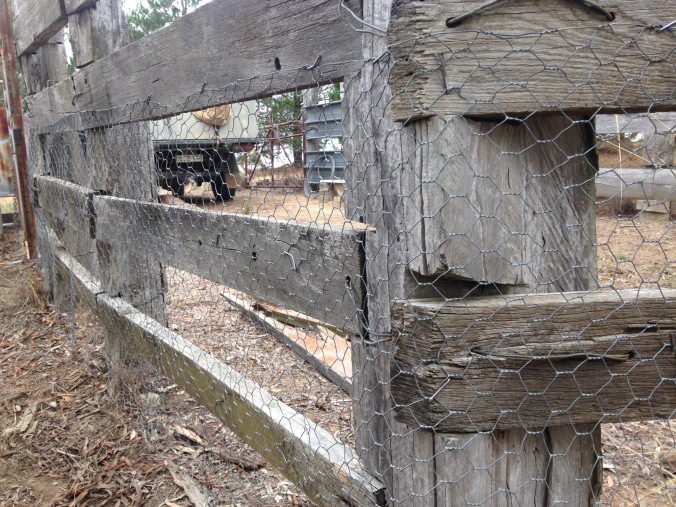If you are going to run stock on your hobby farm, sooner or later you will need a set of yards. Yards are essential to safely work stock, allowing you to perform regular health checks on your animals.
On hobby farms, it is often difficult to justify a large sum of money for a shiny new set of cattle or sheep yards, that will only get used a handful of times a year. If you’re really lucky, you may have inherited a set of yards on your block that you may be able to repair and modify to suit your needs. After all the best set of yards is a free set of yards!
The old adage, they don’t make them like they used to certainly rings true when it comes to yards. Modern yards are usually made out of steel, and you purchase a number of panel sections to construct your yards. Some yards are designed to be portable, meaning you can reconfigure your layout, or even relocate your yards. Older yards were usually made with locally milled timber and fencing wire. Posts were set into the ground and the layout is fixed.
On our block was a tired set of timber cattle yards in need of some maintenance. I also wanted to modify them to allow me to work sheep. The first step was to replace a couple of rotten panels.
Panels can be replaced with anything that provides a solid visual barrier to the stock. With an abundance of stringy-bark saplings, I decided to try using some timber from the block to repair a couple of lower panels.

In the race, a more solid barrier was required. I found a piece of milled hardwood in my shed that was long enough to be cut to size.
Timber yards are rarely held together with bolts or screws. Instead fencing wire is used to tie the panels to the posts. A very simple knot is used that anyone can tie with a pair of pliers. The knot tensions the joint, providing a secure fixture.
I know the knot as the Cobb and Co Hitch, however it is also called the Cocky’s Hitch. Don’t use high tensile fencing wire for this knot, you should use a soft or low tensile wire to allow you to twist the wire. I have written up instructions on how to tie the Cobb and Co Hitch here: https://rockfarming.com/2016/04/07/how-to-tie-a-cobb-and-co-hitch/

Once all the panels were repaired, the next step was to put some chicken wire over the panels to stop the sheep stepping through the panels. This was achieved by rolling out some short lengths of old chicken wire and nailing it to the panels.
It sounds easier than it was. The timber was so hard, I needed to pre-drill the holes for the nails! Finally it was all done – and our yards are now multi-purpose!

Of course not all yards will be as easy to convert as ours were. In some cases, you might be better off starting from scratch. It all depends what condition your yards are in, and whether the layout will work for you. Good luck – and I hope you have as much fun repairing your yards as I did.

